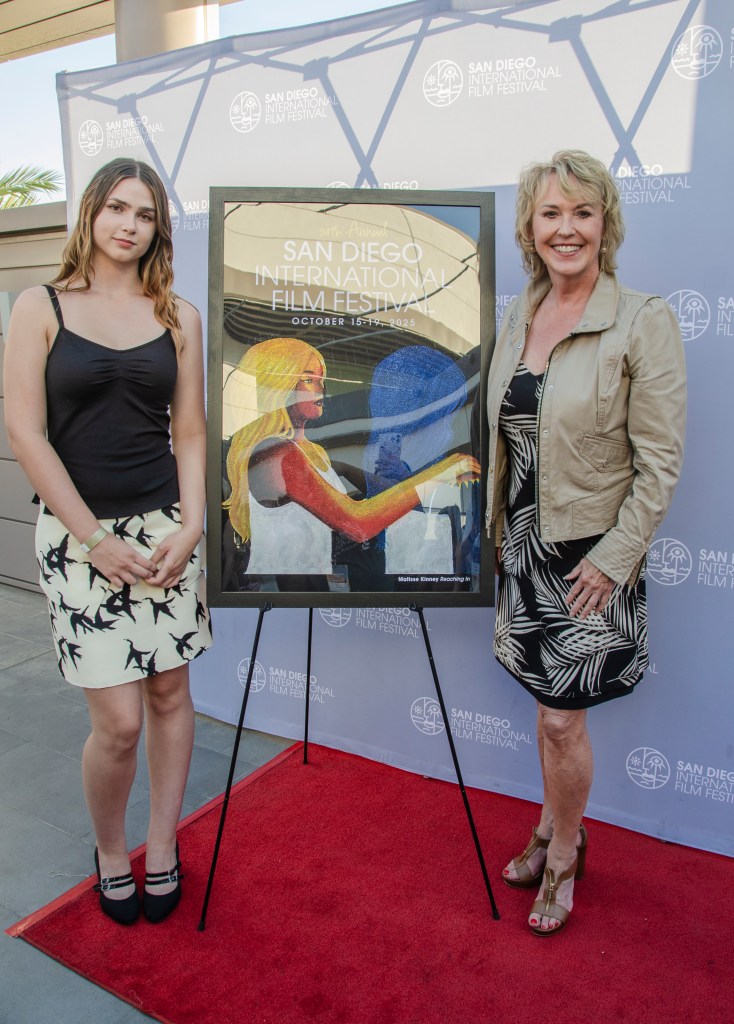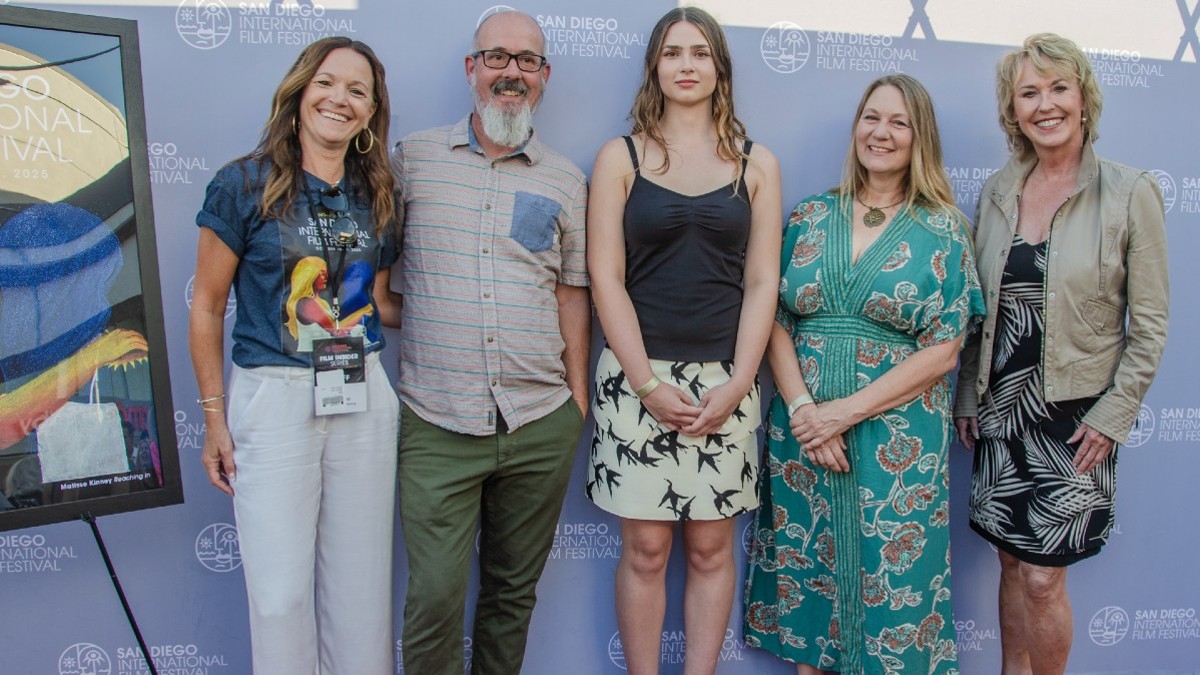For Matisse Kinney, a ninth-grader at the San Diego School of Creative and Performing Arts, creating her acrylic painting, “Reaching In,” was a visual expression of what it feels like to go through depression and the hope that can pull someone out of darkness.
When her work won this year’s FOCUS on Impact student art competition, it became more than a personal milestone; it exemplified how the San Diego International Film Festival is empowering young people to engage meaningfully with the world’s most pressing issues such as mental health.
The FOCUS on Impact educational program combines a curated film library with a student art showcase to help San Diego County students develop compassion while exploring societal challenges.
“Film is really one of the few mediums that allows you to walk in someone else’s shoes,” said Tonya Mantooth, CEO and artistic director. “Until you can see it through their eyes and their perspective, you really can’t develop a true sense of empathy.”
The program is grounded in neuroscience research, which shows that when people watch moving films, specific areas of the brain associated with compassion and empathy become activated.
“You’re literally changing the synaptic pathways by seeing something of impact through the medium of film,” Mantooth said.
Each year, the San Diego Film Festival receives more than 3,500 submissions from filmmakers in more than 80 countries. After a rigorous screening and scoring process, about 100 films are selected for inclusion in the annual festival. From this group of elite entries, the FOCUS on Impact film library is carefully curated to extend the festival’s reach beyond the theater.
The library contains about 30 short-film packages that delve into social, environmental and political issues. Every collection includes recorded Q&As with filmmakers and guided curricula. Another 10 packages are in progress, with new additions expected following this month’s festival.
After viewing a documentary about homelessness, Mantooth said that one student from a private school in San Diego County shared how they would never look at homelessness the same way, having gained a deeper understanding of how circumstances can push people into hardship.
Similarly, when students watched “River Blue,” a documentary on the environmental toll of fast fashion manufacturing, the post-screening discussion led to immediate action. Students questioned whether their school uniform supplier was among the problematic companies named in the film, prompting a schoolwide initiative to ensure ethical sourcing.
“We often look at this next generation, we see them on their phones and we wonder, are they paying attention? They are and they want to be involved,” Mantooth said.
While the program naturally complements history, civics and world civilization classes, teachers are finding creative ways to integrate films across other subjects. Biology and chemistry instructors are using environmental films to engage students, finding that solution-focused stories deepen their curiosity about science.
Perhaps most remarkably, the entire program is available at no cost to teachers or school districts thanks to patron donations. Any high school or college can access the educational portal after a simple sign-up process. With partnerships including the San Diego Unified School District, the County Office of Education and Monarch Schools, the program has the potential to reach 50,000 students.
“Teachers need resources,” Mantooth said. “They’re getting cut in so many different ways. This is a unique program because they no longer have to rely on films made a decade ago. Now it’s films that are just coming out and many are international.”
 Matisse Kinney (L) and Tonya Mantooth stand beside “Reaching In.” (Photo courtesy of the San Diego International Film Festival)
Matisse Kinney (L) and Tonya Mantooth stand beside “Reaching In.” (Photo courtesy of the San Diego International Film Festival)
Beyond the film library, the spring art competition invites middle and high school students to examine humanity through original art. In addition to Kinney’s award-winning “Reaching In” piece on mental health, this year’s topics included LGBTQ+ rights and artificial intelligence. Last year’s submissions addressed immigration, climate change and more nuanced issues such as the loss of cultural identity through gentrification.
“We were floored,” Mantooth said. “It’s a reminder that these kids are well aware of what’s going on in their world.”
During the Oct. 15-19 film festival, an exhibit will showcase the student art finalists and the winner.
For more information about the San Diego Film Festival, visit sdfilmfest.com. Educators interested in joining the FOCUS on Impact Education Program can register at sdfilmfest.com/education/rsvp.
READ NEXT
